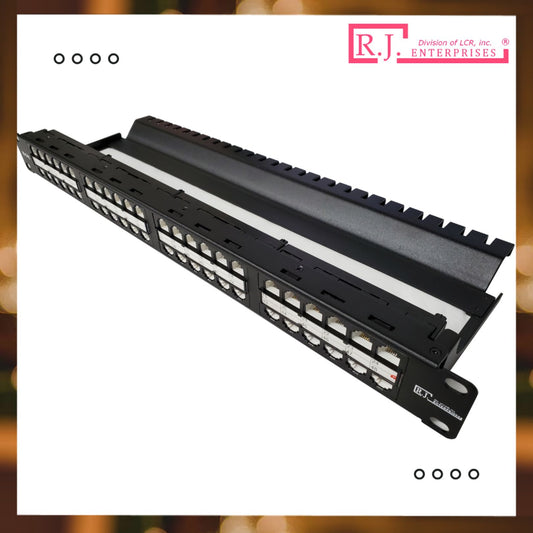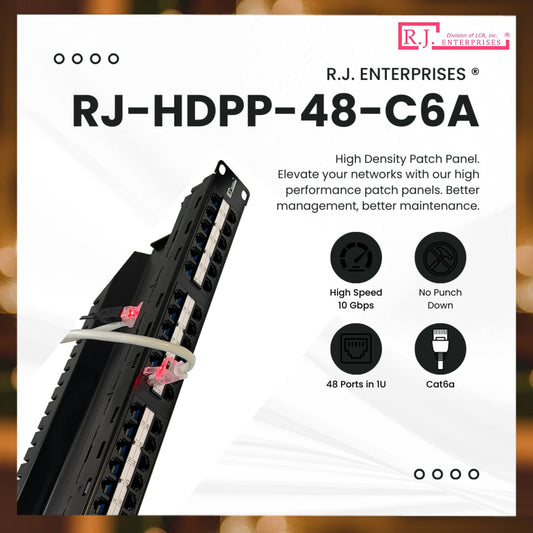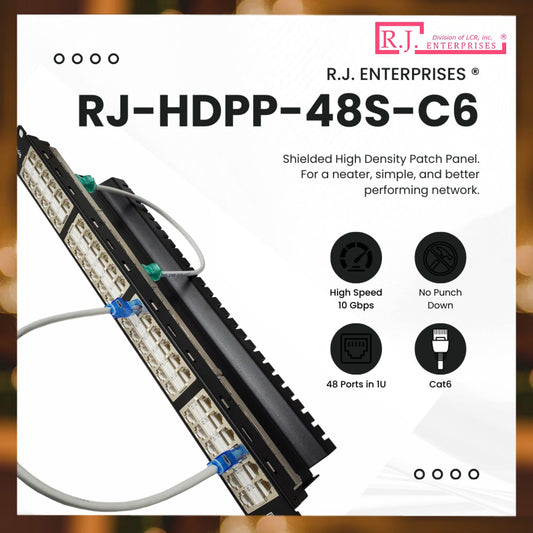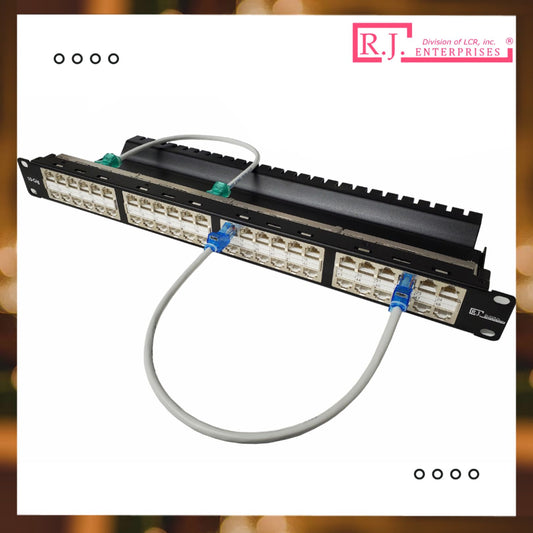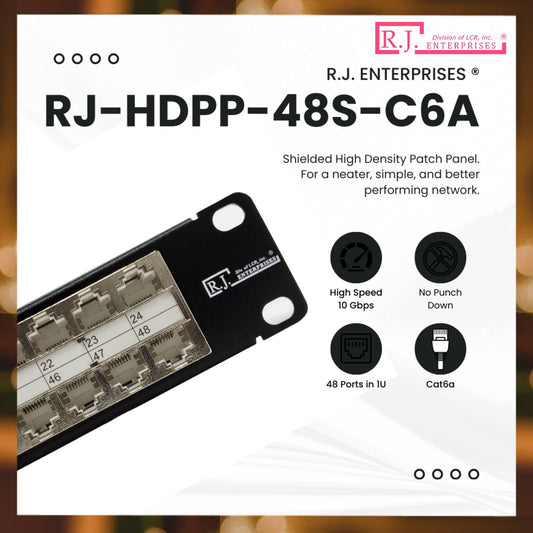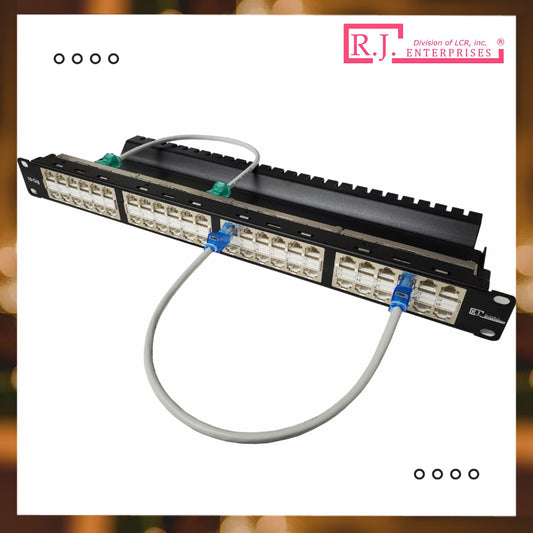
Patch Panels vs Switches | Do You Really Need Them?
Share
When connecting your cables to your switches, it’s considered best practice to use a patch panel to serve as a point of termination instead of a direct cable-to-switch termination. But why is that? Wouldn’t it be simpler to just connect your cables directly to the switch and save both time and money from buying and installing a patch panel? Wouldn’t installing a patch panel degrade the signals, and consequently affect the performance of the network? What about patch panels being another point of failure in your setup? All of these are valid concerns, but here’s why patch panels are worth the “hassle”.
Understanding the difference between patch panels and switches
Before we jump into answering the big questions, it’s important to understand the difference and function between patch panels and switches.
- Switches: a network device that processes and routes data packets to a specified device in the network, requires power to function
- Patch Panels: a network device that acts as a termination point for cables and helps route the cables to the switches, but does not have data processing capabilities nor power needs
Typically cables are connected to a patch panel, and a patch cord is then used to connect a patch panel to a switch.
The #1 reason to use a patch panel
Cable organization. Oftentimes in this industry, you’ll see a server rack filled with switches and jumbled cables running all over the place. Sure, it works. But when you want to find a faulty cable in the spaghetti-like mess, you’d have a much easier time trying to find a needle in a haystack. Now imagine this for a newly onboarded sysadmin who has to manage and sort through hundreds if not thousands of cables. Just imagining the effort and time needed for maintenance gives me a headache!
Instead of directly connecting your cables to your switches, and as a result creating a messy and hard to maintain setup, use a patch panel. Patch panels are specifically designed to help you organize your cables efficiently and in a structured fashion. Patch panels are also equipped with labeling features, so you can easily document and identify the connection points of your cables.
Strain relief and faulty cable replacements
In enterprise networks (or really any networks), rerouting cables can cause issues to arise (even more so depending on the frequency of how often cables are plugged and unplugged). If you’re connecting your network cables directly into a switch, you’re also pulling and twisting them enough to put stress and strain on your switch ports. Although quality switches are built for durability, anything can be damaged with enough wear and tear. To prevent the premature demise of a valuable component in your setup, use a patch panel to absorb the strain instead.
The cables themselves are also subject to damage over time, and can turn into a faulty connection point in your network. A clean and organized system will allow you to quickly trace the damaged cable and replace them with little worries for the rest of your setup.
Would a patch panel degrade your signal transmission?
Unlike switches, patch panels don’t actively interfere with your network performance. Patch panels just simply organize and extend your network cabling. In fact, an optimized cable routing prevents excessive bending and tension – conditions that solid copper/solid core cables should not be subjected to considering their less flexible and brittle nature. Terminating your cables at a patch panel won’t negatively affect your signal transmission. So long as your system is using both proper keystone jacks and installation procedure, there should be minimal if any impact on your signal integrity.
Are patch panels another point of failure?
Patch panels are considered an additional point of failure by some infrastructure managers, and there is some truth to it. An overly complicated network involves a large number of different components and connections that increases the chance of something going wrong. It’s the same as the phrase “too many cooks spoil the broth”. But in our opinion, that’s an overdramatization of the “consequences” of installing a patch panel to your setup.
Yes – all data centers, server rooms, homelabs, etc. can function properly without a patch panel. But doing so also means foregoing the hard benefits that a patch panel and structured cabling can bring to your setup. Conservatively, you can just utilize patch panels for your most traffic-heavy areas.
Our advice? Don’t consider patch panels as another expense, but as an investment. These devices offer you an enhanced level of flexibility, scalability, organization, and critical redundancy that can save you more time and money in the long run.
Longevity and cost savings in the long run
The cost of networking equipment can rack up quickly the larger the scale of your operations. The additional budget needed for patch panels can seem like just another extra cost upfront, but again – don’t consider patch panels as another expense, but as an investment.
Patch panels do wonders towards extending the life and stability of your infrastructure. Take the switches themselves as an example. Depending on if you need a managed switch with PoE support or just a default unmanaged one, these devices can cost you a pretty penny. Patch panels will help prevent damage to your expensive components by acting as a point of redundancy and termination for your cables. Because they’re generally more durable than switches, patch panels also rarely fail.
Additionally, patch panels can save you money in the event you need to replace/reroute a cable. Take ethernet cables that usually start in another room and run through walls to be accessed in another. Terminating these cables at a patch panel will save you the trouble of needing to replace the cables regularly because of the protection offered. Instead of replacing a whole run of cable, you could just only have to replace a few feet of patch cables (which can be made more durable with strain relief boots!).
Patch panel recommendations
If you’re looking for a quality selection of patch panels, look no further than our collection of R.J. Enterprises® Patch Panels! Our catalog features a wide variety of specially designed 24-ports and 48-ports patch panels that include protection against alien crosstalk and EMI, PoE++ support and up to 10 Gbps data transmission. Our patch panels are also designed with a “plug-and-play” functionality, making your installation process easy and hassle-free.


